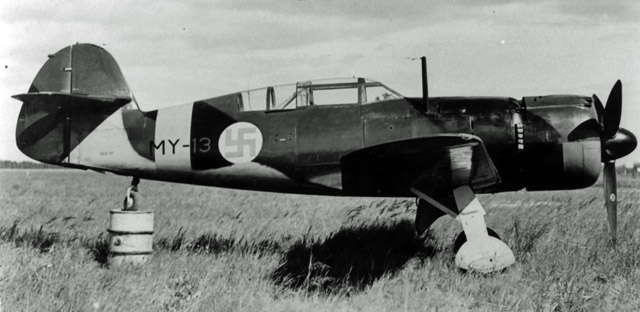VL Myrsky II Restoration Project
Aviation Museum Society, Finland and Finnish Air Force Museum and Finnish Aviation Museum informed 16.3.2013 that they will start a project to restore VL Myrsky II fighter. The fighter will be ready 2019 and it will be exhibited in a Finnish aviation museum.
The material concerning VL Myrsky II fighter as well as the restoration project will be published on these web pages. Sorry, the material is mostly in Finnish and only partially published in English.
History
The design work of VL Myrsky (Storm) fighter started in depressing political situation during spring 1939. The best fighters were not on sale and fighters on sale were expensive and their delivery times were long. Finland liked to develop the national fighter production in order to get the best possible fighters and save foreign currency. The licence production of Fokker D.XXI fighter in Valtion Lentokonetehdas (State Aircraft Factory) had showed the production 50 % cheaper in the homeland than abroad.
The prototype of VL Myrsky was designed for the Pratt & Whitney R-1830 Twin Wasp radial engine. The construction was mixed: a wooden wing and steel tube fuselage with wooden formers and plywood skinning. The prototype flew the maiden flight December 23rd 1941.
During the spring 1942, Finland was allowed to buy a great number of Twin Wasp engines from the German war booty storages and the production could be started. The Ministry of Defence ordered three preproduction fighters (VL Myrsky I) May 30th 1942 and 47 serial production fighters (VL Myrsky II) April 18th 1942.

VL Myrsky II (MY-13). Photo from the collections of FAF Museum.
The deliveries were delayed due to poor wartime glues (lack of phenol formaldehyde resin) and structural problems (flutter in tail structure). However, the VL Myrsky II fighters were deliveried to Reconnaissance Air Squadron 12 and taken into operational use before the end of War.
VL Myrsky II was the second fastest fighter of Finnish Air Force during the World War II – the fastest was Messerschmitt Bf 109G. Unfortunately none sole VL Myrsky II fighters survived.
Read more about structure and charasteristics & performance of VL Myrsky II.
Restoration Project
The first phase of the project is to make an inventory of survived spares and parts. After that, the tail structures will be partially restored and partially reproduced.
The biggest effort will be the reproduction of the wooden wing and the fuselage formers. They will take some 5 000 manhours of 30 volunteers of Aviation Museum Society during the years 2015-2017. Meanwhile, three conservators of FAF Museum will preserve the engine and steel tube frame. After that, the cockpit and other installations as well as the final assembly will be made during 2018. The restoration and reproduction work will take more than 12 000 manhours.
The fighter will be ready for display 2019.
